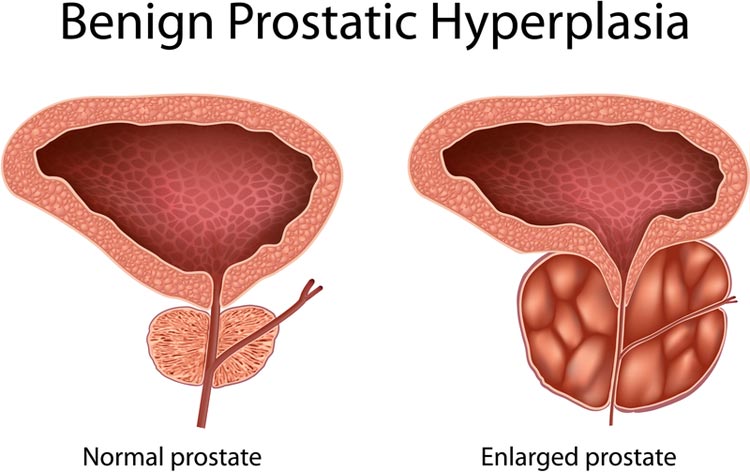Prostate Enlargement

Prostate Enlargement (Benign Prostatic Hyperplasia – BPH)
Prostate Enlargement, also known as Benign Prostatic Hyperplasia (BPH), is a common condition in men, especially those over 50 years old. It occurs when the prostate gland grows larger, pressing against the urethra and causing urinary problems. BPH is not cancerous but can significantly affect quality of life.
Causes & Risk Factors
The exact cause of BPH is not fully understood, but several factors contribute to its development:
- Aging – The risk increases with age, especially after 50.
- Hormonal changes – An imbalance of testosterone and dihydrotestosterone (DHT) plays a role.
- Family history – A genetic predisposition may increase the risk.
- Lifestyle factors – Obesity, lack of exercise, and poor diet may contribute.
- Chronic conditions – Diabetes, heart disease, and high blood pressure are linked to BPH.
Diagnosis
Doctors diagnose BPH through a combination of:
Medical history & symptom evaluation.
Digital Rectal Exam (DRE) – To check prostate size and texture.
Prostate-Specific Antigen (PSA) Test – Rules out prostate cancer.
Urine Tests – Detects infections or other conditions.
Ultrasound or MRI – Checks prostate size and bladder function.
Uroflowmetry & Post-Void Residual Test – Measures urine flow rate and bladder emptying.
Treatment Options
The treatment approach depends on severity and impact on daily life.
1. Lifestyle Changes (For Mild Cases)
- Reduce fluid intake at night to minimize nocturia.
- Limit caffeine and alcohol – These irritate the bladder.
- Maintain a healthy weight – Obesity worsens symptoms.
- Exercise regularly – Improves overall urinary health.
- Practice double voiding – Urinate, wait a few minutes, and try again.
2. Medications
- Alpha-blockers (Tamsulosin, Alfuzosin) – Relax prostate muscles to improve urine flow.
- 5-Alpha Reductase Inhibitors (Finasteride, Dutasteride) – Reduce prostate size by blocking DHT production.
- Combination Therapy – Both drug types may be used together for better results.
- Bladder relaxants – Help if bladder overactivity is present.
3. Minimally Invasive Procedures
For moderate to severe cases that don’t respond to medication:
- Transurethral Microwave Therapy (TUMT) – Heat destroys excess prostate tissue.
- Urolift System – Lifts and holds the enlarged prostate away from the urethra.
- Rezum Therapy – Uses steam to shrink prostate tissue.
4. Surgery (For Severe Cases)
- Transurethral Resection of the Prostate (TURP) – Removes part of the prostate.
- Laser Surgery (HoLEP, Greenlight laser) – Vaporizes or removes prostate tissue.
- Prostatectomy – Rare, but may be needed for extremely large prostates.
Prevention & Long-Term Care
Regular prostate screenings (especially after 50).
Healthy diet – Rich in vegetables, healthy fats, and whole grains.
Stay active – Exercise helps maintain a healthy metabolism.
Avoid holding urine for long periods – Can weaken bladder function.
Prognosis & Outlook
Most men manage BPH effectively with medications and lifestyle changes. If symptoms worsen, minimally invasive treatments or surgery can offer long-term relief.
Would you like recommendations on natural supplements, exercises, or dietary changes for prostate health?

